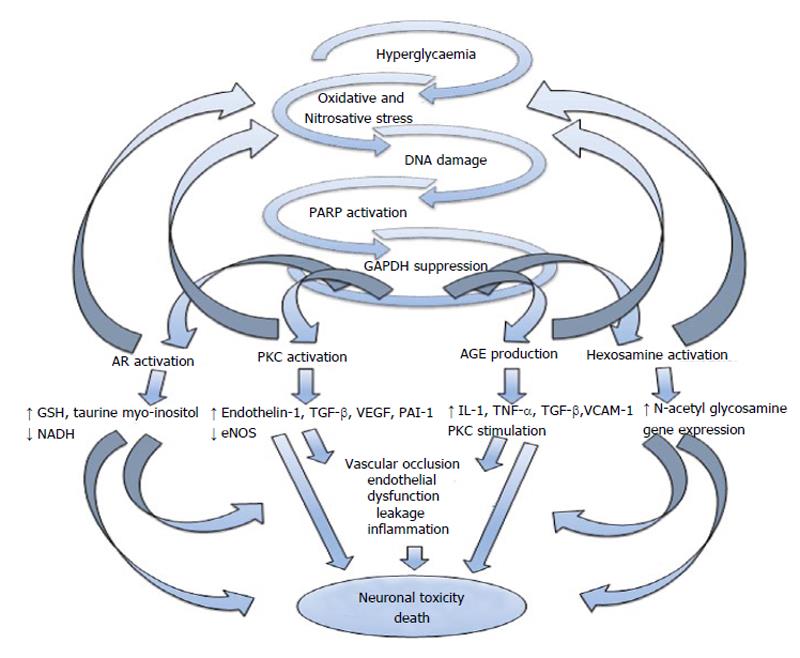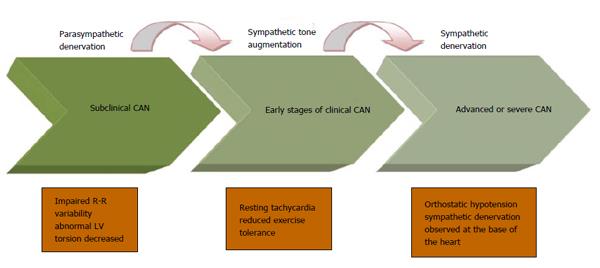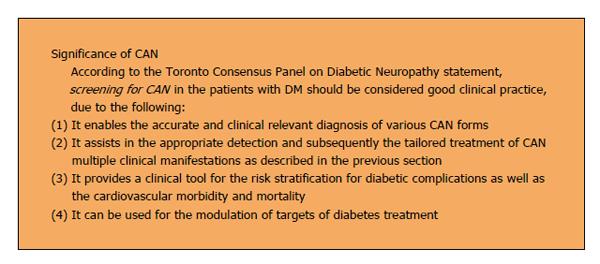Copyright
©2014 Baishideng Publishing Group Co.
World J Diabetes. Feb 15, 2014; 5(1): 17-39
Published online Feb 15, 2014. doi: 10.4239/wjd.v5.i1.17
Published online Feb 15, 2014. doi: 10.4239/wjd.v5.i1.17
Figure 1 Summary of the mechanisms that relate hyperglycaemia to microvascular complications in patients with diabetes.
PKC: Protein kinase C; AGE: Advanced glycation end-products; PARP: Poly ADP-ribose polymerase; GAPDH: Glyceraldehyde-3 phosphate dehydrogenase; GSH: Glutathione; NADH: Nicotinamide adenine dinucleotide; TGF-β: Transforming growth factor; VEGF: Vascular endothelial growth factor; PAI-1: Plasminogen activator inhibitor-1; eNOS: Endothelial nitric oxide synthase; IL-1: Interleukin 1; TNF-α: Tumour necrosis factor-α; VCAM-1: Vascular cell adhesion molecule 1.
Figure 2 Natural progression of CAN and correlation with clinical signs and symptoms.
CAN: Cardiac autonomic neuropathy; LV: Left ventricle.
Figure 3 Current recommendations on screening for cardiac autonomic neuropathy.
CAN: Cardiac autonomic neuropathy; DM: Diabetes mellitus.
- Citation: Dimitropoulos G, Tahrani AA, Stevens MJ. Cardiac autonomic neuropathy in patients with diabetes mellitus. World J Diabetes 2014; 5(1): 17-39
- URL: https://www.wjgnet.com/1948-9358/full/v5/i1/17.htm
- DOI: https://dx.doi.org/10.4239/wjd.v5.i1.17















